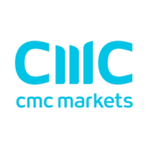Trading 212 REVIEW 2025
Trading 212 is known for zero-commission stock trading and a sleek mobile app. But does it truly deliver for beginners and active traders in 2025? We tested the platform to uncover its strengths and hidden drawbacks
Broker Guide's Trading 212 Review in 2025
When I first downloaded Trading 212 and set up my account, I wanted to see if all the hype around commission-free trading really lived up to its promise. Within minutes, I was buying fractional shares of big-name companies straight from my phone—something that used to feel complicated suddenly became almost effortless.
But as I dug deeper, testing everything from its CFD platform to withdrawals and customer support, I found that Trading 212 isn’t quite the same experience for every type of trader.
This review is the result of my hands-on testing, where I’ll share what works brilliantly, what falls short, and whether this broker is the right fit for you this year.

About Trading 212

History & Background
Trading 212 was founded in 2004 and is headquartered in London, UK. What began as a small fintech venture has since grown into one of Europe’s most widely used trading platforms, with millions of users across the UK and EU. From the start, its mission has been to make investing more accessible, and its mobile-first approach has helped it stand out in a competitive market. Today, Trading 212 UK is regarded as a reliable entry point for everyday investors.
What They Offer
The broker provides two main avenues for clients:
- Trading 212 Invest – commission-free access to stocks and ETFs, including fractional shares.
- Trading 212 CFD – contracts for difference on forex, indices, commodities, and crypto CFDs (availability depends on jurisdiction).
- Trading 212 ISA – available for UK residents, allowing tax-efficient investing.
- Practice Account – a demo environment with virtual funds to practice risk-free.
This mix of products makes Trading 212 attractive to both beginners and more active traders.
Unique Selling Points
Trading 212’s biggest draw is commission-free stock and ETF trading. Combined with fractional investing, it allows users to own shares of major companies with as little as £1. The platform’s sleek mobile and desktop apps are designed for ease of use, while the practice account makes it beginner-friendly. Accessibility and simplicity are the core of its value proposition.
Business Model
While investors enjoy commission-free stock and ETF trades, Trading 212 generates revenue in other ways:
- Spreads on CFD trades
- Currency conversion fees on foreign transactions
- Overnight financing charges for leveraged CFD positions
- Premium services
This model enables the broker to sustain its no-commission offer while maintaining long-term financial stability.
My Quick Verdict: Who is Trading 212 Best For?
After testing Trading 212 across both its Invest and CFD accounts, my impression is clear: this platform is designed with accessibility in mind. For beginners or anyone who wants to invest in stocks and ETFs commission-free, Trading 212 delivers exactly what it promises. The ability to buy fractional shares makes it easy to start small, and the user-friendly interface ensures that even first-time investors can navigate the platform with confidence.
The mobile app is where it truly shines. Its intuitive design, clean layout, and quick execution make it one of the most seamless investing apps I’ve used. It feels less intimidating than traditional platforms and lowers the barrier for everyday users to enter the markets.
That said, advanced CFD traders may find Trading 212 less appealing. The lack of MetaTrader support, fewer advanced tools, and spreads that aren’t always the most competitive can be limiting if you’re focused on high-volume or algorithmic strategies.
In 2025, it remains a solid choice for retail investors, particularly beginners who value simplicity, commission-free trading, and a smooth mobile experience.
Pros
- Zero-commission stock & ETF trading – ideal for long-term investors looking to keep costs low.
- Fractional shares – start investing with as little as £1, even in high-priced companies.
- Intuitive mobile & desktop platforms – sleek, user-friendly design suited for beginners and casual investors.
- Regulated in the UK & EU – oversight from the FCA and FSC provides strong investor protection.
- Low entry barrier – no minimum deposit required for Invest accounts, making it easy for anyone to get started.
Cons
- No MetaTrader or third-party platforms – limits flexibility for advanced traders who rely on industry-standard tools.
- Limited research tools – less depth compared to competitors like Interactive Brokers or eToro.
- No crypto spot trading – only available through CFDs, and only in certain jurisdictions.
- Currency conversion fees – applied when trading assets in a different currency, which can eat into returns over time.

Why You Should Choose Trading 212 ?
With so many brokers on the market, deciding where to invest can feel overwhelming. Some focus on advanced tools for professionals, while others target casual traders. Trading 212 in 2025 positions itself right in the sweet spot for beginners and everyday investors by combining zero-commission trading, a sleek mobile experience, and strong regulatory backing. Here’s why it continues to be one of the best brokers for beginners in the UK and Europe.
Accessibility and Low-Cost Entry
Trading 212 was built around accessibility. There’s no minimum deposit for Invest accounts, and the ability to buy fractional shares means you can start with just £1. This lowers the barrier to entry and makes investing possible for anyone, regardless of budget.
Commission-Free Stock Investing
As a zero-commission broker, Trading 212 ensures that more of your money goes into your portfolio rather than into fees. Over the long run, avoiding commission charges can make a significant difference, especially for investors building wealth gradually.
Mobile-First Convenience
Trading 212’s mobile app is one of the most user-friendly platforms available. Designed with everyday investors in mind, it makes buying, selling, and tracking your investments feel effortless. The desktop platform offers the same smooth experience, ensuring flexibility across devices.
Trusted by Millions in the UK & Europe
With millions of active users and regulation under both the FCA (UK) and FSC (EU), Trading 212 has established itself as a trustworthy brand. Investor protection schemes and client fund safeguards add to its credibility.
Free Demo Account for Practice
For anyone still hesitant, Trading 212 offers a practice account with virtual funds. This is an excellent way to test strategies or simply learn how the platform works before investing real money.
Verdict
If you’re a long-term investor or casual trader who values simplicity, affordability, and trust, Trading 212 in 2025 remains one of the strongest choices on the market.
Compare to Top Competitors
While Trading 212 has carved out a strong reputation as a commission-free, mobile-first broker, it’s not the only choice available. Competitors like eToro, XTB, and Pepperstone also attract millions of traders worldwide, each with their own strengths and drawbacks. Here’s how they stack up side by side.

eToro
Pepperstone
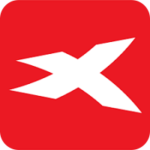
XTB
Exploring Trading 212's Range of Tradable Instruments
One of the biggest advantages of Trading 212 is the variety of markets and instruments it offers, giving investors flexibility in how they want to trade or invest. From commission-free stocks and ETFs to leveraged CFD products, the platform covers most major asset classes that retail investors look for.
Stocks and ETFs
Through the Trading 212 Invest account, users can access thousands of stocks and exchange-traded funds (ETFs) from major global exchanges, including the London Stock Exchange, NYSE, and NASDAQ. With the option to buy fractional shares, even expensive companies like Amazon or Tesla are within reach for everyday investors. The ability to diversify easily across multiple Trading 212 markets makes it attractive to long-term investors building portfolios.
CFDs on Indices, Forex, and Commodities
For those seeking more active trading opportunities, Trading 212 CFD provides exposure to a broad range of leveraged products. These include:
Indices – such as the S&P 500, FTSE 100, and DAX.
Forex – access to major, minor, and exotic currency pairs.
Commodities – including gold, oil, and agricultural products.
These instruments allow traders to speculate on price movements without owning the underlying asset, though they come with higher risk due to leverage.
Crypto CFDs
While Trading 212 does not currently offer crypto spot trading, it provides access to crypto CFDs in certain jurisdictions. This lets traders speculate on the price of popular cryptocurrencies like Bitcoin and Ethereum. However, UK retail clients cannot trade crypto derivatives due to FCA restrictions.
Jurisdictional Restrictions
The exact range of Trading 212 instruments depends on your location. For example, UK clients have access to Invest, CFD, and ISA accounts, but crypto CFDs are restricted. EU clients can typically trade CFDs on crypto, forex, and commodities, alongside stocks and ETFs.
Bottom Line
With thousands of stocks, ETFs, and CFDs available, Trading 212 provides broad access to global markets. Whether you’re a beginner looking to invest commission-free in shares or an active trader seeking exposure to forex and indices, the platform offers a wide enough selection to cover most retail trading needs.
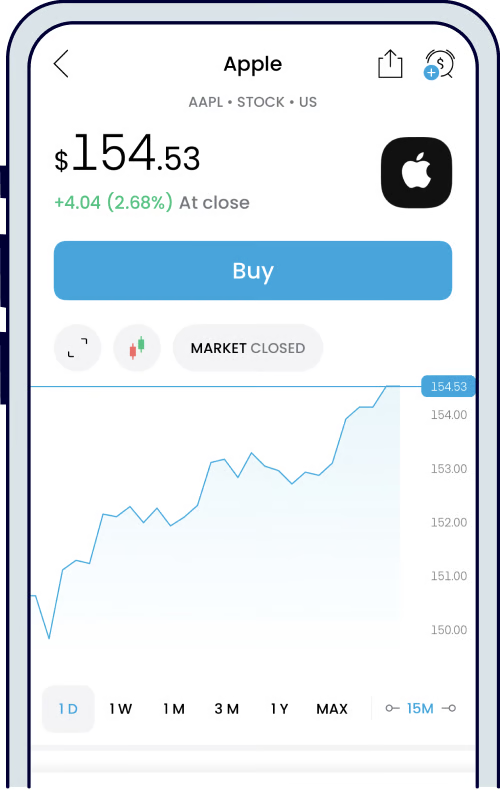
| Asset | Trading 212 |
|---|---|
| Forex Pairs | 184 |
| Tradeable Symbols | 7800+ |
| U.S. Stock Trading (Non CFD) | Yes |
| Int'l Stock Trading (Non CFD) | Yes |
| Social Trading / Copy Trading | No |
How Trading 212’s Instruments Compare to Competitors
| Features | Trading 212 | eToro | XTB | Pepperstone |
|---|---|---|---|---|
| Stocks & ETFs | ✅ Yes (real, commission-free, fractional shares) | ✅ Yes (real, commission-free, fractional shares) | ✅ Yes | ❌ No real stock/ETF trading |
| Forex | ✅ Yes | ✅ Yes | ✅ Strong selection, many pairs | ✅ Strong selection, ultra-tight spreads |
| Commodities & Indices | ✅ Yes | ✅ Yes | ✅ Yes | ✅ Yes |
| Crypto | ❌ Not Available | Spot crypto + crypto CFDs (region-dependent) | ⚠️ Limited crypto CFDs | ⚠️ Limited crypto CFDs |
| Platform Choice | Proprietary Trading 212 app (mobile + web) | Proprietary eToro app (social features) | xStation 5 (desktop + mobile) | MT4, MT5, cTrader, TradingView |
| Best for | Long-term investors & beginners | Social & crypto traders | Active CFD & forex traders | Professional/algorithmic forex & CFD traders |
Trading 212 vs eToro
Both brokers give access to stocks, ETFs, and CFDs, but eToro has a strong edge in crypto spot trading, which Trading 212 lacks. On the other hand, Trading 212 stands out for fractional shares and commission-free investing, making it more cost-effective for stock investors. eToro leans more toward social and community trading, while Trading 212 focuses on straightforward market access.
Trading 212 vs XTB
XTB shines in forex and CFD trading, offering a wide selection of currency pairs, commodities, and indices with fast execution. However, it doesn’t provide commission-free real stock or ETF investing in the same way Trading 212 does. If your focus is long-term equity investing, Trading 212 wins; if you’re a dedicated forex trader, XTB may be the stronger choice.
Trading 212 vs Pepperstone
Pepperstone specializes in forex and CFDs with very tight spreads and professional-grade platforms like MT4, MT5, and cTrader. It’s designed for active and algorithmic traders who value execution speed. Trading 212, by contrast, appeals more to retail investors building stock and ETF portfolios commission-free, though it lacks the advanced platform flexibility Pepperstone provides.

Fees and Commission Structure
| Fees | |
|---|---|
| Minimum Deposit | €1 |
| Average Spread EUR/USD (Standard) | 2.7 pips |
All-in Cost EUR/USD - Active | 2.7 pips |
| Commissions | $0 |
Forex CFD fees | Average |
Stock CFD fees | Average |
| Deposit Fees | $0, until you deposit 2,000 GBP/EUR in total; after that, a 0.7% fee applies.
|
| Withdrawal Fees | $0 |
| Inactivity Fee | $0 |
When evaluating a broker, fees and costs are often just as important as platform features or market access. Even small differences in spreads, commissions, or conversion charges can add up significantly over time, especially for active traders. Trading 212 fees are designed to appeal to beginners and long-term investors through commission-free stock and ETF investing, but CFD traders should pay closer attention to spreads, overnight financing, and currency conversion charges. Below, we break down trading fees, other costs, and non-trading fees to give you a clear picture of what to expect in 2025.
Trading Fees
Commission-Free Investing
Trading 212 offers zero commission on stocks and ETFs through its Invest/ISA accounts. This means you don’t pay per-trade fees when buying or selling shares—your main cost is related to currency conversion when trading outside your base currency.
Spreads on CFD Trading
For CFD and forex trading, spreads are the key cost. These are the fees that Trading 212 charges instead of commissions on these instruments. A few data points:
The average EUR/USD spread is around 2.7 pips on CFD accounts (industry average is tighter).
Some reports show spreads near 1.8 pips under normal conditions.
At peak liquidity, spreads can tighten further, but they are still not as competitive as brokers like Pepperstone.
Currency Conversion Fees
Swap fees (overnight financing) are slightly higher than the industry average. For example, holding a long position in gold may incur a swap cost of around $54 per lot.
These fees vary depending on the instrument, position type, and market interest rates. Despite this, swap rates are clearly listed on the platform, helping traders manage long-term costs.
Non-Trading Fees
Deposit & Withdrawal Fees
Trading 212 does not charge fees for withdrawals but charges 0.7% deposit fee if you deposit more than €2,000 in total to your Invest account using credit/debit cards or electronic wallets.
Inactivity Fee
As of 2025, no inactivity fee is charged. This is particularly appealing for casual investors who don’t trade regularly.
Verdict
Trading 212’s fee model is one of its biggest advantages for casual investors. The zero-commission stock and ETF trading, coupled with fractional shares and no deposit/withdrawal charges, makes it one of the most accessible brokers in the UK and Europe. For beginners and long-term investors, this keeps costs simple, predictable, and very low.
However, the picture shifts when it comes to CFD and forex trading. With an average EUR/USD spread of about 2.7 pips, Trading 212 is noticeably more expensive than brokers like Pepperstone or XTB, who cater to active CFD traders with tighter spreads and raw pricing options. The 0.15%–0.5% currency conversion fee also adds up for those trading in non-base currencies.
On the positive side, no inactivity fees and transparent overnight financing charges keep the broker’s costs straightforward compared to competitors that tack on hidden non-trading fees.
Trading 212 offers a low-cost, commission-free environment for investors, but active CFD and forex traders will likely find better value elsewhere.
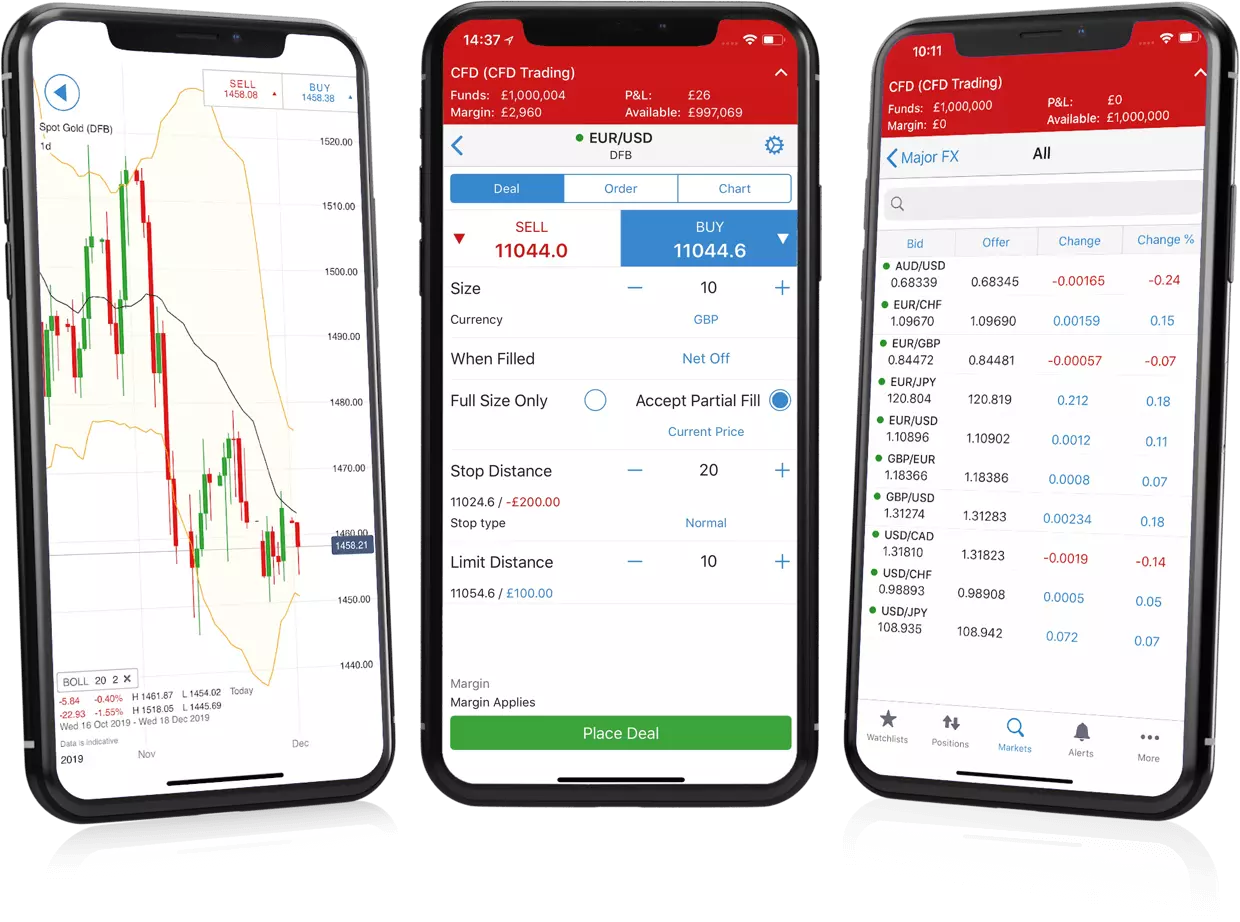
IG Review

FP Markets Review

CMC Markets Review
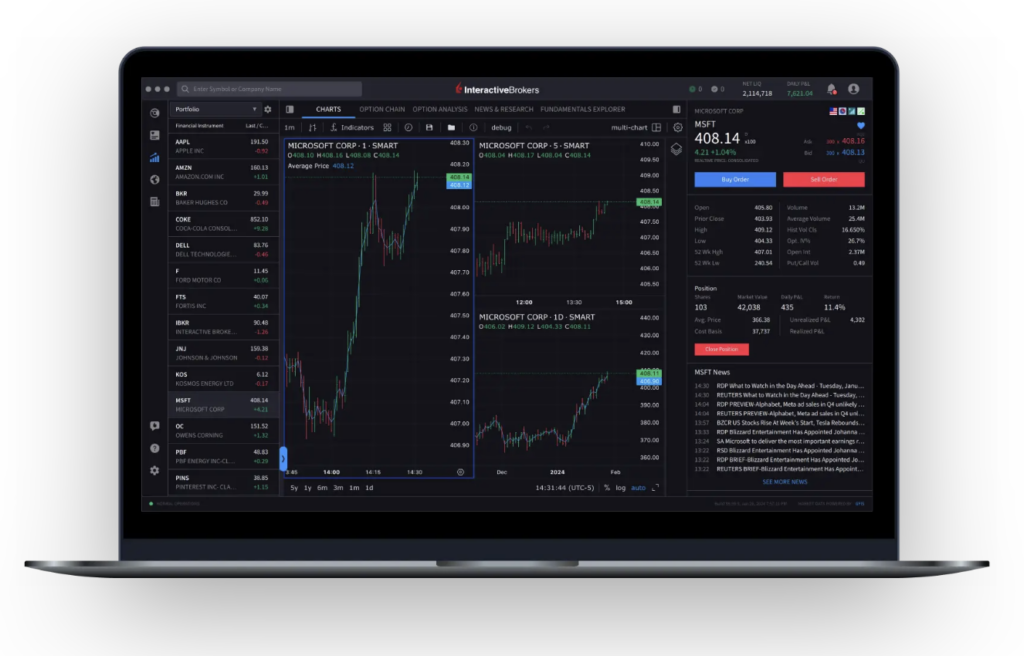
Interactive Brokers Review
Is Fusion Markets Regulated ?

Regulation plays a key role in determining how safe and trustworthy a broker is. Fusion Markets operates under a multi-entity structure, with different subsidiaries licensed by recognized regulators around the world. This setup allows the broker to serve a global client base while maintaining compliance in each region.
Regulatory Entities
- FMGP Trading Group Pty Ltd — Regulated by the Australian Securities and Investments Commission (ASIC), License No. 385620. ASIC is a Tier-1 regulator, widely respected for enforcing strict financial and operational standards. This entity covers clients based in Australia and ensures that client funds are held in segregated accounts with top-tier banks.
- Gleneagle Securities Pty Ltd — Licensed by the Vanuatu Financial Services Commission (VFSC), License No. 40256. The VFSC provides a lighter regulatory framework, mainly aimed at offering flexibility to international traders.
- Fusion Markets International Ltd — Registered and regulated by the Financial Services Authority (FSA) in Seychelles, License No. SD096. This entity allows Fusion Markets to serve clients from regions not covered by its Australian license.
Protection and Safety Measures
Under the ASIC license, clients benefit from negative balance protection, which prevents traders from losing more than their account balance. However, this protection does not apply under the VFSC or FSA entities.
Fusion Markets does not offer an investor compensation scheme, unlike brokers regulated in the EU or UK. This means that while the broker adheres to strict fund segregation and capital adequacy rules, there is no compensation fund in case of insolvency.
To further protect traders, Fusion Markets is also a member of The Financial Commission, an independent dispute resolution organization. This gives clients an additional layer of support in the event of a complaint or dispute.
Overall Assessment
Fusion Markets is considered a safe and well-regulated broker, especially for clients under the ASIC entity. Its compliance with multiple regulators and transparent operations inspire confidence. However, since it lacks EU or UK regulation and an investor compensation scheme, it is not classified as a top-tier global broker.
Understanding Regulatory Protections and Broker Stability
Segregated Client Funds
Fusion Markets takes client fund safety seriously. All client money is kept in segregated accounts with top-tier Australian banks, completely separate from the company’s own operating funds. This ensures that client deposits are protected and cannot be used for business expenses or trading activities. It’s a standard requirement under ASIC regulation, adding a strong layer of financial security.
Transparency and Track Record
Since its launch in 2017, Fusion Markets has maintained a transparent approach to operations. The broker publicly shares its company details, license numbers, and legal disclosures on its website. This open documentation helps traders verify its credentials easily. Over the years, it has built a reputation for reliability and honesty, earning positive reviews and industry recognition for consistent service quality.
Company Growth and Global Presence
Fusion Markets employs more than 100 professionals worldwide, with its main office located in Melbourne, Australia. The team has continued to expand its operations and platform offerings while maintaining lean operational costs to keep trading fees low.
Stability and Limitations
The broker is financially stable and continues to grow its client base each year. However, it does not hold licenses in the European Union or the United Kingdom, which limits access to investor compensation schemes available under those jurisdictions.
Bottom Line
Fusion Markets demonstrates strong safety practices, financial transparency, and operational stability, making it one of the more reliable regulated forex brokers in its category.
How To Open an Account
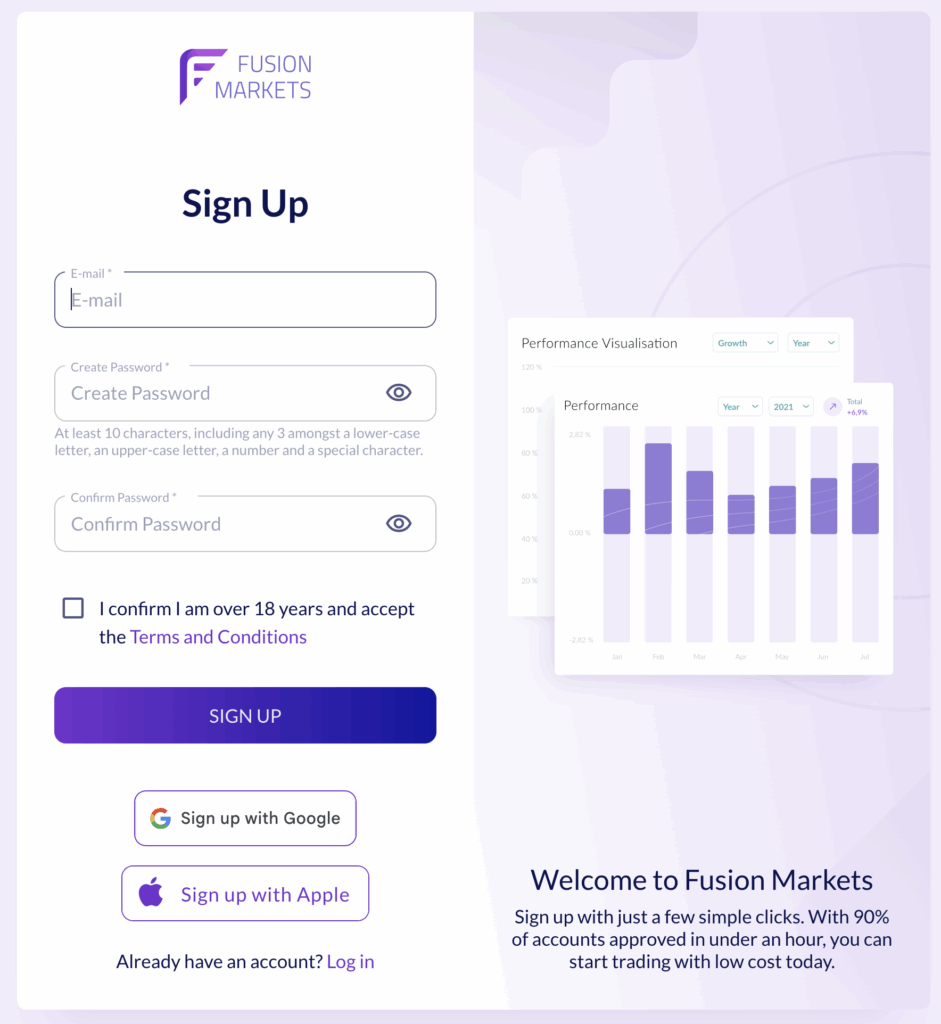
Opening an account with Fusion Markets is simple and fast. The whole process takes just a few minutes, and your account can be verified in a day.
Step 1: Register
Go to the Fusion Markets website and click “Create an Account.” Enter your email and password to create your profile.
Step 2: Add Personal Details
Fill in your basic information such as name, address, and country of residence. You’ll also choose your account type and base currency.
Step 3: Verify Your Identity
Upload your ID (passport or driver’s license) and proof of address (utility bill or bank statement). Verification is usually completed very quickly.
Step 4: Choose Platform
Select the platform you prefer — MT4, MT5, cTrader, or TradingView. Choose between a Classic or ZERO account depending on whether you prefer spread-only or commission-based pricing.
Step 5: Fund and Trade
Deposit money using your preferred payment method, and you’re ready to trade. Deposits are fast, and there are no setup or account maintenance fees.
If you’re outside Australia, there’s no suitability test required, so you can start trading right after approval.
Account Types
Fusion Markets offers a range of account types to suit different trading styles and experience levels. Whether you’re a beginner or a professional trader, there’s an option designed to match your goals and strategy.
Classic Account
The Classic Account uses a simple spread-only model with an average markup of 0.9 pips on major currency pairs. There are no commissions, which makes it easier for new traders to understand their costs.
This account is best for beginners and casual traders who prefer straightforward pricing without extra fees. Despite being commission-free, spreads remain tight compared to many competitors, making it an affordable choice for small-volume trading.
ZERO Account
The ZERO Account is designed for traders who want the lowest possible spreads and the fastest execution. Spreads start from 0.0 pips, and there’s a $4.50 round-turn commission per standard lot.
This account is ideal for scalpers, algorithmic traders, and experienced investors who rely on precision and high-frequency trading. It’s one of the most cost-efficient setups available among ECN brokers in 2025.
Pro Account (ASIC Clients Only)
Available only to ASIC-registered clients, the Pro Account offers higher leverage, rebates, and priority customer support. It’s built for professional or high-volume traders who meet ASIC’s eligibility criteria and need enhanced trading conditions.
MAM/PAMM Accounts
For fund managers or traders handling multiple clients, Fusion Markets offers MAM/PAMM account options. These accounts allow seamless management of multiple portfolios under one master account, with real-time performance tracking and allocation flexibility.
Islamic Account
Fusion Markets also provides a swap-free Islamic account that complies with Sharia principles, allowing traders to open positions without overnight interest charges.
Demo Account
New traders can start with a free demo account, which stays active for 30 days and can be renewed on request. It’s a safe way to test strategies or get familiar with the platforms before trading live.
What is the Minimum Deposit at Forex.com?

Funding your account at Fusion Markets is simple, fast, and cost-effective. The broker is known for its flexible payment options and transparent policy on deposits and withdrawals, making it easy for traders to manage funds without worrying about hidden charges.
Minimum Deposit
Fusion Markets has a $0 minimum deposit, allowing anyone to start trading with any amount they’re comfortable with. This flexibility is ideal for beginners who want to test the platform before committing larger funds. There are no setup or funding fees, and you can open an account instantly after completing verification.
| Broker | Minimum Deposit |
|---|---|
Fusion Markets | $0 |
| IC Markets | $200 |
| Oanda | $0 |
XM | $5 |
Deposit and Withdrawal
The broker supports a wide range of payment methods, including:
All deposits are processed quickly, and funds usually appear in your trading account within a few minutes (for cards and e-wallets) or up to one business day for bank transfers. Fusion Markets does not charge any deposit fees, although your bank or payment provider might apply small processing charges.
Withdrawal Fees & Options
Withdrawals are just as straightforward. Fusion Markets offers free withdrawals for most payment methods. However, international bank wire transfers incur a $20 fee, which is standard among global brokers. Withdrawal requests are processed within 1–3 business days, depending on the payment method and your bank’s processing time.
Traders can request withdrawals directly from their secure client portal. Fusion Markets processes transactions quickly, with most e-wallet and card withdrawals approved within the same business day.
Supported Currencies
Fusion Markets allows accounts in multiple base currencies, including USD, EUR, GBP, AUD, JPY, CAD, SGD, and THB. Choosing a base currency that matches your local bank helps you avoid unnecessary currency conversion fees, keeping costs low.
Bottom Line
With no minimum deposit, zero funding fees, and fast withdrawal processing, Fusion Markets makes funding and accessing your money smooth and stress-free. Its wide range of payment options and transparent policies make it one of the most convenient brokers for global traders.
Desktop Trading Platform
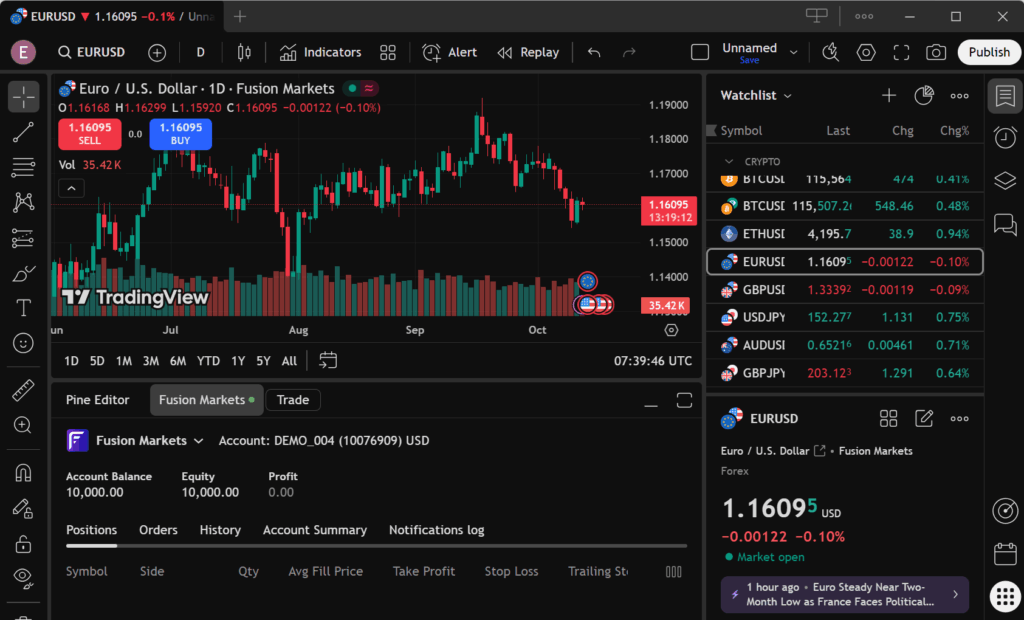
Fusion Markets gives traders access to four professional-grade trading platforms — MetaTrader 4 (MT4), MetaTrader 5 (MT5), cTrader, and TradingView. Each platform is designed to meet different trading styles, from beginners and discretionary traders to professionals using automated systems. The broker’s focus on flexibility and technology ensures a seamless trading experience across all devices.
MetaTrader 5 (MT5) — Fast and Feature-Rich
MT5 is the most popular platform among Fusion Markets users. It’s fast, reliable, and packed with advanced tools, including 38 built-in indicators, 21 timeframes, and automated trading support through Expert Advisors (EAs).
The platform also offers an integrated economic calendar, customizable charts, and the ability to hedge or net positions. With low spreads and stable execution, MT5 is an excellent choice for both beginners and experienced traders.
cTrader — Built for Precision and Speed
cTrader is available for ZERO account holders who want the best possible execution speed and order control. It features depth of market visibility, advanced charting, and one-click trading, making it ideal for scalpers and high-frequency traders.
The clean interface and advanced order management tools give traders full control over their strategies, while also supporting custom indicators and algorithmic trading through cAlgo.
TradingView — Smart Charting and Social Insights
TradingView integration brings the power of community-driven analysis to Fusion Markets. Traders can access real-time charts, create custom indicators, and use Pine Script to automate strategies.
The platform also allows sharing ideas and insights with millions of users worldwide, making it a favorite for traders who value both advanced charting and market collaboration.
Copy Trading
Fusion Markets offers several copy trading options for traders who prefer an automated or social approach.
Fusion+ is the broker’s built-in copy trading platform. It lets users follow and automatically copy trades from experienced signal providers, making it ideal for beginners or investors who prefer hands-free trading.
DupliTrade allows clients to mirror professional strategies directly into their accounts, with full transparency and performance tracking.
Myfxbook AutoTrade offers another layer of automation by connecting traders to proven systems that execute trades in real time.
All three tools — Fusion+, DupliTrade, and AutoTrade — work seamlessly with Fusion Markets’ ECN pricing, ensuring fast execution and transparent results. These platforms make it easy to follow experts, diversify strategies, and trade smarter with minimal effort.
VPS Hosting for Automated Trading
To support advanced and high-frequency strategies, Fusion Markets provides free VPS hosting for clients who trade 20 or more lots per month. The VPS ensures low latency, stable connectivity, and uninterrupted trading, even when the user’s device is offline.
Verdict
Fusion Markets delivers a powerful combination of trading platforms that cater to every type of trader. From MT5’s reliability to cTrader’s precision, TradingView’s social power, and DupliTrade’s automation, the broker offers one of the most complete and flexible trading experiences available in 2025.
Pros & Cons of the Web Platform
Pros
- Multiple platforms to choose from
- Excellent order execution
- Algo and copy trading support
Cons
- Outdated MT interface
- No proprietary platform
Mobile App
Fusion Markets offers mobile trading across all its supported platforms — MT4, MT5, cTrader, and TradingView — giving traders full access to the markets wherever they are. The apps are available on iOS and Android devices and are optimized for speed, reliability, and ease of use.
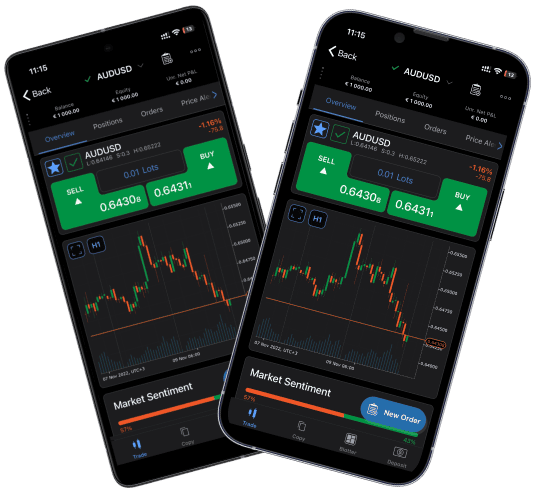
MT4 and MT5 Mobile Apps
The MetaTrader apps remain the most popular choice among Fusion Markets traders. They provide fast order execution, real-time price alerts, and basic charting and analysis tools. Traders can open and close positions, manage orders, and monitor their accounts directly from their phones. While charting options are more limited than on desktop, the apps are ideal for managing trades on the go.
cTrader Mobile App
The cTrader app delivers a clean, modern interface with advanced order types and quick access to real-time depth of market data. It’s perfect for scalpers and active traders who need precise control over entries and exits. The app also syncs seamlessly with the desktop version, allowing smooth transitions between devices.
TradingView Mobile
For traders who love detailed charts, the TradingView mobile app offers advanced visual analysis tools, custom indicators, and access to the TradingView community. It’s great for staying connected to market trends and sharing ideas while away from the desk.
Verdict
The Fusion Markets mobile experience is best for managing open trades and monitoring markets, rather than doing deep analysis. It’s fast, reliable, and practical — perfect for trading on the go.
Pros & Cons of the Mobile App
Pros
- Fast Execution: Orders are processed quickly, allowing traders to react to market changes in real time.
- Easy to Use: Clean, intuitive interface on all platforms (MT4, MT5, cTrader, TradingView) makes navigation simple for beginners.
- Real-Time Alerts: Push notifications and price alerts help traders stay updated on key market movements.
- Multi-Platform Access: Syncs seamlessly with desktop versions, ensuring smooth transitions between devices.
- Reliable Performance: Stable connection and low latency make mobile trading efficient even on slower networks.
Cons
- Limited Charting Tools: Fewer technical indicators and customization options compared to desktop platforms.
- Smaller Screen Space: Charting and analysis can feel cramped on mobile devices.
- Not Ideal for In-Depth Analysis: Best for monitoring and managing trades rather than conducting full technical research.
Market Research, Tools, and Education
Fusion Markets provides a well-rounded selection of research tools and trading resources designed to support traders of all experience levels.
While the broker’s research is practical and reliable, its educational materials are somewhat limited compared to larger competitors.
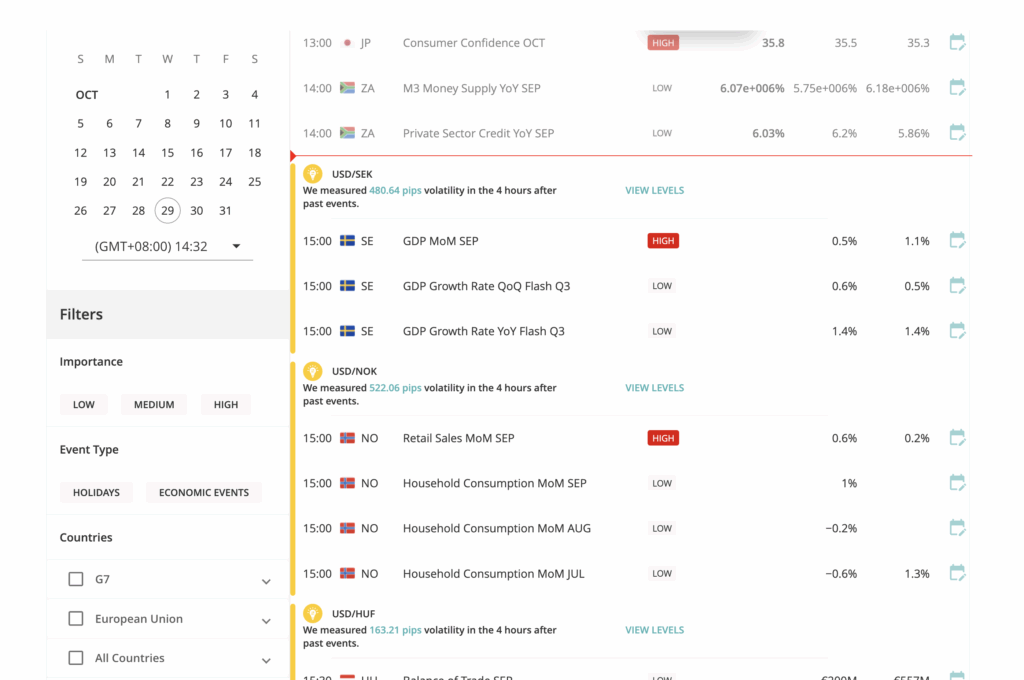
Customer Support

Fusion Markets provides 24/7 customer support through live chat, email, and phone, ensuring traders can get help whenever they need it. The team is known for being responsive, friendly, and knowledgeable, offering clear answers to both technical and account-related questions.
Traders can contact support via live chat directly on the website, which typically connects to an agent within a minute. For more detailed inquiries, users can email help@fusionmarkets.com, and responses usually arrive within a few hours. Phone support is also available during trading hours, making it easy to speak directly with a representative.
Fusion Markets has built a strong reputation for excellent customer service, reflected in its 4.8-star Trustpilot rating based on thousands of client reviews. Many traders praise the team for their professionalism, fast responses, and genuine willingness to help resolve issues.
Beyond general support, the broker also provides personal account managers for active traders, offering tailored guidance and faster assistance when needed. The help center and FAQ section on the website cover common questions about trading platforms, deposits, and withdrawals, allowing users to find answers instantly.
Verdict
Fusion Markets stands out for its quick, reliable, and friendly customer support. With around-the-clock live chat and consistently high customer satisfaction ratings, it’s one of the most responsive brokers in the industry.
FAQ
Is Fusion Markets safe and regulated in 2025?
Yes. Fusion Markets is regulated by ASIC (Australia), VFSC (Vanuatu), and FSA (Seychelles). ASIC oversight ensures strong client fund protection and transparent operations, making the broker safe and trustworthy for traders worldwide.
What platforms does Fusion Markets support?
Fusion Markets supports MT4, MT5, cTrader, and TradingView, giving traders access to a variety of interfaces for manual, automated, and social trading.
What are Fusion Markets spreads and commissions?
Spreads start from 0.0 pips on the ZERO account, with a $4.50 round-turn commission per lot. The Classic account has no commission but includes a 0.9-pip spread markup.
What is the minimum deposit?
The minimum deposit is $0, allowing traders to start with any amount they’re comfortable with.
Does Fusion Markets charge withdrawal or inactivity fees?
No. Fusion Markets charges no deposit, withdrawal, or inactivity fees. Only international bank wires may incur a $20 fee.
Can I trade crypto on Fusion Markets?
Yes. Fusion Markets offers 10+ cryptocurrencies, including Bitcoin (BTC), Ethereum (ETH), and Solana (SOL).
Does it offer negative balance protection?
Yes, but only for ASIC-regulated clients. Other entities (VFSC and FSA) do not provide this protection.
How can I open a Fusion Markets account?
You can sign up online by providing your email, verifying your ID, and funding your account. The process takes less than an hour.
Is Fusion Markets good for beginners?
Yes. It’s beginner-friendly due to its simple setup and low costs, though educational resources are somewhat limited.
Is Fusion Markets good for beginners?
What countries are restricted?
Fusion Markets does not accept clients from the U.S., Japan, and a few restricted jurisdictions due to regulatory reasons.




